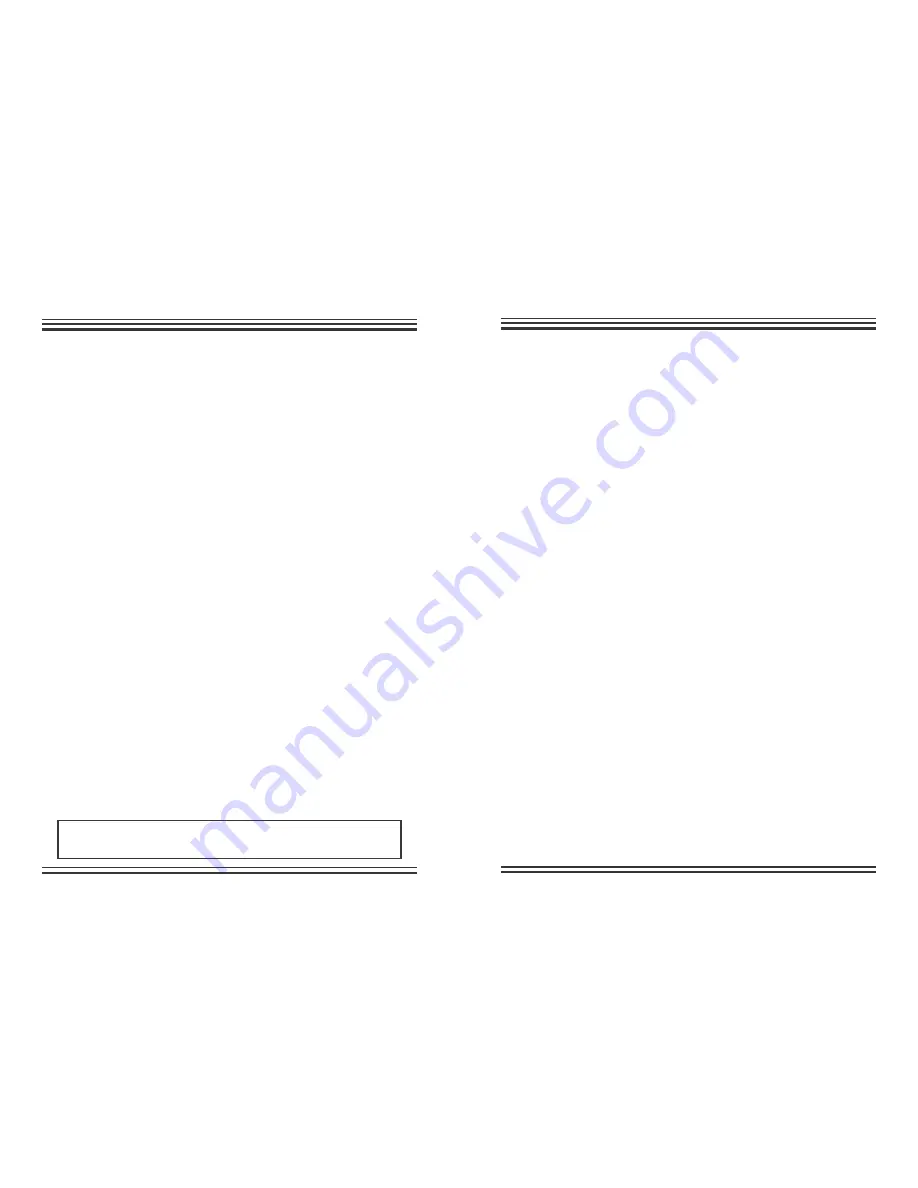
SpectraPure
SpectraPure®Inc.
480.894.5437 Call us toll-free 1.800.685.2783
215 South Industrial Drive, Suite 2A Tempe, Arizona 85281-2941
®
6
1. Remove the DI cartridge from the right-most housing and
re-install the empty housing.
2. Attach the garden hose adapter to your cold water source.
Never run hot water (greater than 100° F (38° C)) through
the
system.
3. Place the yellow concentrate tubing and the blue purified
water tubing into the drain. Do not restrict flow from these
lines.
4. Slowly open the cold water supply valve and allow
the first two housings to fill. You may use pressure up to
80 psi (5.5 bar).
5. Check the system to ensure that all fittings are tight and
leak-free before leaving the system unattended.
6. Allow the system to produce at least 2 gallons (7.57 liters)
of purified water and discard.
7. Check the Concentrate to Purified Water Ratio by follow
ing the set-up instructions on the next page.
8. Close the cold water supply valve. Locate and re-install the
DI
cartridge.
9. Slowly open the cold water supply valve and discard the
first gallon of product water.
Note: Air trapped in the DI cartridges is a normal condition
and will not affect the operation of the DI cartridges. Mounting
the blue product water tubing so that at least a short length
of tubing is higher than the filter unit can often alleviate this
condition.
System Start-Up
System Initialization & System Start-Up
If you are setting up your system for the first time or replacing
the RO membrane:
SpectraPure®Inc
.
assumes no responsibility for water
damage due to leaks. It is the user’s responsibility to determine
that the system is leak-free.
SpectraPure
®
SpectraPure®Inc
.
Fax 480.894.6109 Fax us toll-free 1.877.527.7873
E-mail: [email protected] Visit us on the web www.spectrapure.com
19
Membrane Output Calculation Example
What is the expected GPD from a 75 GPD System at 40 psi pressure and 60°F
water temperature?
PCF = 40 ÷ 60 = 0.666
TCF = 0.754 (from Table 1)
Expected GPD = 75 × 0.666 × 0.754 = 37.7 GPD ± 15%
37.7 GPD would be the Actual Production Rate
Testing the Quality of the Membrane
The performance of a RO membrane is measured by its ability to reject salts
(or TDS (Total Dissolved Solids)).
Important: Test the quality of the membrane once every 6 months.
Note: This procedure will require a Conductivity Meter (TS-C61) or (TS-T71).
Procedure:
1. Measure tap water conductivity. (Call it X)
2. Run the system for 15-20 minutes.
3. Rinse test instrument cell 2-3 times with RO water.
4. Measure RO water conductivity directly from the blue product
water line. (Call it Y).
5. Subtract RO water conductivity from tap water conductivity. (X - Y)
6. Divide this quantity by tap water conductivity. (X - Y) ÷ X
7. Rejection = [(X - Y) ÷ X ] ×100
* Conductivity in the above procedure could be replaced by hardness, alkalinity,
nitrate, phosphate, silica etc. (measured in ppm or mg/l).
Rejection of the RO Membrane Calculation Example
1. Tap water hardness = 150 ppm (X)
2. RO water hardness = 7 ppm (Y)
3. X - Y = 143 ppm
4. (X - Y) ÷ X = 143 ÷ 150 = 0.953
5. Rejection = [ ( X - Y) ÷ X ] ×100 = 0.953 ×100 = 95.3
Membrane Hardness Rejection = 95.3 % : Rejection rates less than 95% may
indicate that the membrane should be replaced.
Membrane Testing






























